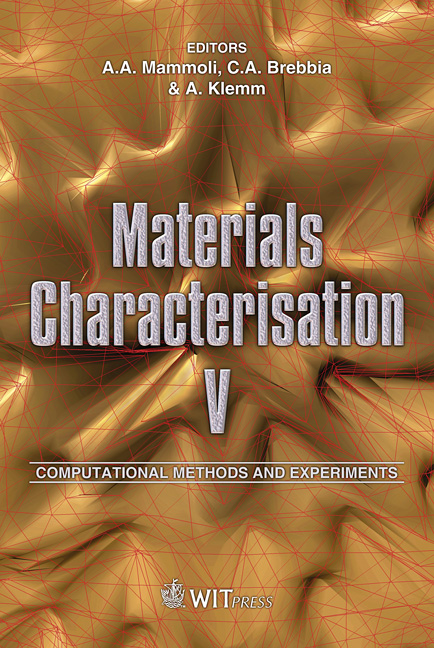Optimization Of Magnetoelastic Properties Of Pure Nickel By Means Of Heat Treatments
Price
Free (open access)
Transaction
Volume
72
Pages
12
Page Range
275 - 286
Published
2011
Size
1,501 kb
Paper DOI
10.2495/MC110241
Copyright
WIT Press
Author(s)
A. L. Morales, A. J. Nieto, J. M. Chicharro, P. Pintado, G. P. Rodríguez & G. Herranz
Abstract
In this work we include valuable information about the way in which nickel may become a valuable smart material for some applications and we provide a better understanding of the influence of internal stresses on its magnetoelastic effects. The different states of internal stress are achieved via different heat treatments obtained by modifying three main parameters: the heating temperature, the heating time and the cooling method. Then, we carried out the next works: first, a microscopic analysis of the grain size of the samples under different heat treatments; second, all the tested specimens were subjected to an exhaustive internal stress analysis via X-Ray diffraction techniques; and third, the ΔE- and ΔΨ-effects were estimated in order to link the internal stress state of the sample to its magnetoelastic response. The results can guide us in selecting the most suitable heat treatment in order to make nickel show the smart properties we desire. Keywords: magnetoelasticity, internal stress, heat treatments, nickel, X-Ray diffraction. 1 Introduction Magnetomechanical materials are a kind of smart material in which there is a reciprocal coupling between their mechanical and magnetic properties [1]. In this broad category, described by Jiles in [2], we can find both magnetoelastic and magnetoplastic materials. The former are those in which the variation of the altered properties is reversible, whereas the latter are those in which the recovery of the properties is not necessarily obtained simply on removal of the magnetic or mechanical action.
Keywords
magnetoelasticity, internal stress, heat treatments, nickel, X-Ray diffraction





